8. A Night at the Opéra.
The 1831 premiere of Giacomo Meyerbeer’s Robert le Diable broke new ground in at least two ways. Its scale and complexity
would set the seal on a new genre of Grand Opera, not only in France, but also as a blueprint for what later companies in the
United States and elsewhere would be founded to perform. And its fourth-act Ballet of Fallen Nuns would open a new kind of
Romantic dance that would travel to Russia and elsewhere in Europe, return to Paris, and thence spread around the world.
Meyerbeer came to Paris from Berlin via Italy, though he made his home in France and his name became indelibly associated with
French music. Most other composers of grand opéra were also foreigners: Rossini, Donizetti, and Verdi among them. The
classic Romantic ballets were created by Italians, Danes, or Russians—but all in Paris, which thus became the clearing house for
ballet for more than a century.
Although many of the works mentioned in class have been discussed before, the actual clips are all new. Script, videos, and
images will be posted immediately after class.
Q AND A
What was happening in the Firebird scene?
Prince Ivan has wandered into the enchanted garden of King Koschei, who has turned his enemies to stone and enchanted Thirteen
Princesses. Ivan has captured the Firebird but released her in answer to her pleas; she has given him a magic feather in gratitude.
Koschei enters. Before he can turn him to stone, Ivan summons the Firebird, who now does battle against Koschei's minions until
they drop to the ground, exhausted. The stone figures return to life and the 13 princesses rejoice.
Did Marius Petipa invent ballet notation?
Kathleen asked me this after class. She is partially right. Petipa did not invent notation as such, but one of the first systems
of ballet notation, invented by Vladimir Ivanovich Stepanov in 1892, was used to record all the major Petipa ballets, including
Giselle, The Sleeping Beauty, and Swan Lake, and was the form in which they were spread to the outside world. The
system used by the Royal Ballet, Benesh Notation, was invented in 1956. I myself have worked closely with a choreographer
working from Laban Notation, developed in the 1920s by Rudolf Laban and used especially for modern dance. Since Labanotation
describes not only the postion of the dancer and the parts of the body that move, but also the nature of the Effort that
goes into it (force, direction, and speed). I have used it extensively as a training tool for actors.
VIDEO LINKS
Many of the opera clips shown in class are available at the links below, but not all. For Robert le Diable, I have
only the Act IV finale plus a very short clips of the Nuns' scene; I have added a very interesting set of interviews with
people involved in the production. The Toulouse Favorite, Paris Carmen, and Paris Faust actually link
to the complete productions. While there are two other scenes from the London Faust, there is nothing of the Act IV
ballet; the nearest things I could find were a staging of an earlier dance sequence from the opera, plus the full 17-minute
orchestral performance.
For ballet, we fare better. The Giselle clip from the Royal Ballet is shorter than the one I showed. I do,
however, have two videos of the entire second act: one from the Bolshoi in rather misty video, and one from the Royal Danish
Ballet which faithfully preserves the original, but stages it in a modern decor with very little scenery. *Asterisked items
are different from those shown in class. rb.
| GIACOMO MEYERBEER |
| |
Robert le Diable |
|
* Nuns' ballet
(short composite clip)
* Act IV finale
* About the London production
(interesting interviews)
|
| |
| GAETANO DONIZETTI |
| |
La Favorite |
|
* Act III, "Oh mon Fernand"
(Kate Aldrich, Toulouse)
|
| |
La Fille du Régiment |
|
* Act I duet
(Natalie Dessay, Alessandro Corbelli)
|
| |
| CHARLES GOUNOD |
| |
Faust (London) |
|
* Cabaret d'Enfer
* Jewel song
(Angel Gheorghiu)
|
| |
Faust (Paris) |
|
* End of church scene
(Inva Mula, Paul Gay)
|
| |
Faust dances |
|
* Act IV ballet sequence
(orchestral only)
* Act II waltz
(L Fenice, Venice)
|
| |
| OTHER COMPOSERS |
| |
Jacques Offenbach |
|
* Orphée aux Enfers, can-can
(Natalie Dessay, very short)
|
| |
Georges Bizet |
|
* Carmen, Act II
(dialogue between numbers)
|
| |
| FILM AND TELEVISION |
| |
The Age of Innocence |
|
* Faust in New York
(opening of Scorcese film)
|
| |
The Gilded Age |
|
* Faust after dinner
(HBO, 2023)
|
| |
| ROMANTIC BALLET |
| |
La Sylphide |
|
* Act II complete
|
| |
Giselle |
|
* Dance of the Willis
(Royal Ballet, London)
* Act II complete
(Bolshoi)
* Act II complete
(Royal Danish Ballet)
|
| |
| OTHER FRENCH BALLET |
| |
Le spectre de la rose |
|
* Entrance of the Spirit
(cued to where we started)
|
| |
L'oiseau de feu |
|
* Defeat of Koschei
(cued to where we started)
|
| |
Class at the Paris Opéra |
|
* Andrey Klemm
(cued to where we started)
|
| |
|
|
|
|
|
| IMAGES |
The thumbnails below cover the slides shown in class, though
there may be a few small discrepancies. Click the thumbnail to see a larger image.
Click on the right
or left of the larger picture to go forward or back, or outside it to close. |
 | |
 | |
 | |
 | |
 | |
 | |
 | |
 | |
 | |
 | |
 | |
 | |
 | |
 | |
 | |
 | |
 | |
 | |
 | |
 | |
 | |
 | |
 | |
Here are brief bios of the artists, composers, and writers considered in the class, listed in order of birth.
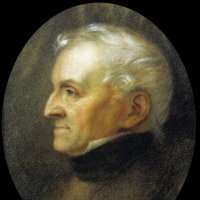 |
Filippo Taglioni, 1777–1871. Italian choreographer.
Taglioni was an Italian dancer who performed at the Paris Opéra before taking up an appointment as balletmaster with the Royal Swedish Ballet. There, he married a Swedish singer who bore him two children, Marie and Paul, both of whom became successful dancers. His name is best remembered in conjunction with Marie, who became the first superstar ballerina under his training and management, and for whom he choreographed the first defining Romantic ballet, La sylphide, in 1832.
|
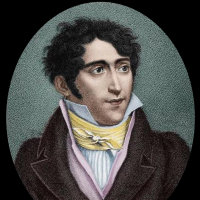 |
Jean Coralli, 1779–1854. French choreographer and composer.
The son of an Italian actor in Paris, Coralli trained as a dancer and enjoyed an early career in Vienna, Venice, and Milan, as a performer and choreographer. The pinnacle of his career came on his return to the Paris Opera, where he created the quintessential Romantic ballet Giselle in 1841, working with Jules Perrot on the choreography and Adolphe Adam on the music, both younger men than himself.
|
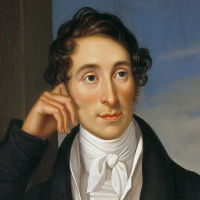 |
Carl Maria von Weber, 1786–1826. German opera composer.
Although he also wrote instrumental music, Weber's work to establish a German national opera is crucial, reaching its full flowering with Der Freischütz in 1821.
|
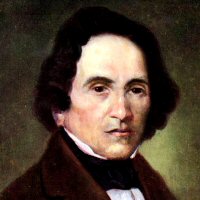 |
Giacomo Meyerbeer, 1791–1864. German composer working in France.
Although born and trained in Germany, Meyerbeer began his prolific opera career in Italy, falling under the spell of the serious operas of Rossini. He moved to Paris in 1826 and began a series of operas that essentially defined the notion of Grand Opera, among them Robert le Diable (1831), Les Huguenots (1836), Le Prophète (1849), and L'Africaine (1865).
|
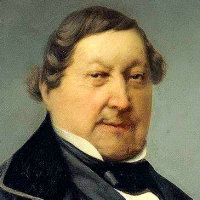 |
Gioacchino Rossini, 1792–1868. Italian composer.
Rossini's fame rests on his 39 operas, especially the comedies, all written while he was still in his thirties. In 1829, fter writing Guillaume Tell, one of the foundation stones of French grand opéra, he essentially retired, settling in Paris, and writing only occasional pieces plus his masterpieces of sacred music, the Staba Mater of 1842 and Petite Messe solennelle of 1864.
|
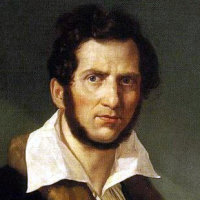 |
Gaetano Donizetti, 1797–1848. Italian composer.
One of the leading composers of historical and romantic operas in the bel canto era, including a trilogy featuring Queen Elizabeth I, plus comedies in both Italian and French, Donizetti nonetheless began his career with a mythological scene, Pygmalion.
|
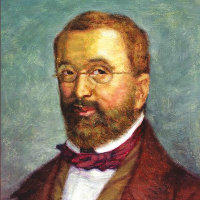 |
Adolphe Adam, 1803–56. French composer.
Adam wrote 39 operas, mainly in the comic vein, but is probably best known for his score to the ballet Giselle (1841).
|
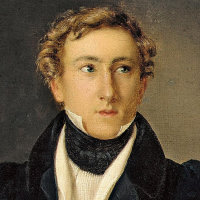 |
August Bournonville, 1805–79. Danish choreographer.
The son of an immigrant French dancer, Bournonville trained partly in Paris and partly in Copenhagen, where he spent the whole of his subsequent career. Not only was the the choreographer of over 50 works, including La sylphide (1836) and Napoli (1842), he institiuted a rigorous system of training which preserved their style intact to the present day—a legacy unmatched by any other ballet tradition.
|
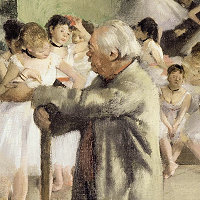 |
Jules Perrot, 1810–92. French choreographer.
The Lyon-born Perrot began his career as the dancing partner of Marie Taglioni. When she broke the partnership, fearing he might outshine her, he turned his attentions to Carlotta Grisi, and (with the older Jean Coralli) created the 1841 ballet Giselle around her. He went on to create Pas de Quatre in 1845, bringing Taglioni, Grisi, and two other ballerinas together. He ended his career as ballet master in Saint Petersburg.
|
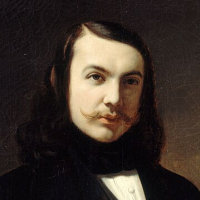 |
Théophile Gautier, 1811–72. French writer.
After his family moved from the Pyrenees to Paris, Gautier grew up among many of the figures who would become part of the artistic scene of the 30s and 40s. He published his first book of poetry in 1830, and soon became known also as a critic. He was a passionate balletomane, and the groundbreaking 1841 ballet Giselle was based on his scenario.
|
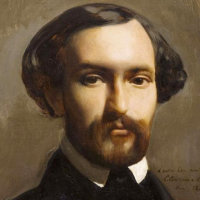 |
Charles Gounod, 1818–93. French composer.
Gounod was the leading French opera composer in the third quarter of the 19th century, achieving fame with Faust and Roméo et Juliette His Philémon et Baucis, which came in between these in 1860, is a lighter opéra comique based on Ovid's story.
|
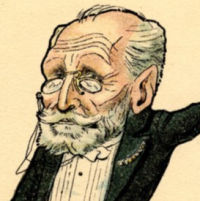 |
Marius Petipa, 1819–1910. French-Russian choreographer.
After a career as a dancer in France and Spain, Petipa accepted a position with the Imperial Theatre in St. Petersburg, and remained in Russia the rest of his life. His work as the choreographer of The Sleeping Beauty, The Nutcracker, and the 1895 revival of Swan Lake made him one of the most influential choreographers of all time.
|
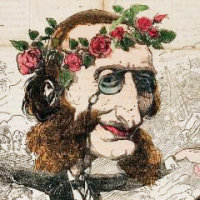 |
Jacques Offenbach, 1819–80. German-French composer.
The son of a cantor, Offenbach took the name of the German town in which he was born. After studying at the Paris Conservatoire, he began to write operettas, composing over 90 in the course of a long and wildly successful career. He is also known for his unfinished grand opera The Tales of Hoffmann.
|
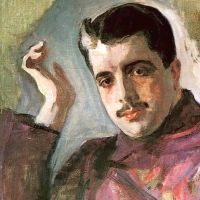 |
Serge Diaghilev, 1872–1929. Russian impresario.
He founded the Ballets Russes in 1909. His company dominated the Parisian scene for at least a decade, and gave opportunities to such figures as the dancer Vaslav Nijinsky, the choreographer George Balanchine, the designer Léon Bakst, and the composer Igor Stravinsky.
|
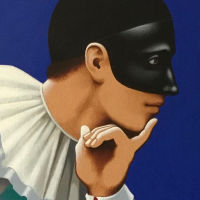 |
Michel Fokine, 1880–1942. Russian choreographer.
Born into a prosperous family in Saint Petersburg, Fokine trained as a dancer, but also considered careers in painting and music. This made him a natural fit for Sergei Diaghilev, who engaged him in 1909 as resident choreographer for his Ballets Russes, whose work combined many arts; his work for them included The Firebird (1910) and Petrushka (1912), both with music by Stravinsky. He later emigrated to New York, and founded the American Ballet Company.
|
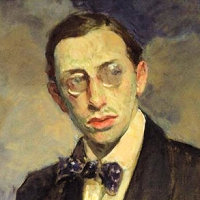 |
Igor Stravinsky, 1882–1971. Russian-American composer.
Starting as an enfant terrible in Paris with the ballets he wrote for Serge Diaghilev, he gradually pared back his resources, developing a neo-classical style between about 1930 and 1955, but eventually turning his back on tonality.
|







































